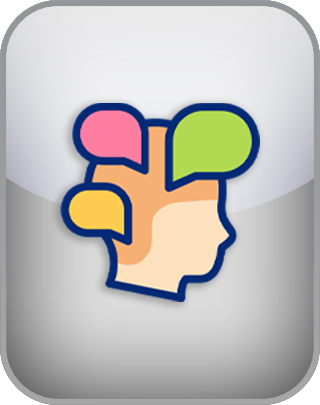Hyperthymic Spectrum Test
The hyperthymic spectrum encompasses a range of traits characterized by persistent high energy, optimism, and sociability. However, there is considerable variation in the type and intensity of these traits.
This test combines insights from prior research on hyperthymic temperament to provide a single, composite test for measuring hyperthymic tendencies across 8 different domains.
Where do you fall on the hyperthymic spectrum? For each of the following questions, indicate your level of agreement below.
Question 1 of 40
Others say I dream big.
| Disagree | Agree |
NEXT
The IDRlabs Hyperthymic Spectrum Test (IDR-HTST) was developed by IDRlabs. The IDR-HTST is inspired by clinical observations and research on hyperthymic temperament, including the work of Dr. Hagop Akiskal, M.D., who contributed to the understanding of hyperthymic personality traits. The IDR-HTST is not associated with any specific researchers in the field of psychopathology or any affiliated research institutions.
The test provides feedback such as the following:
Elevated Optimism: Hyperthymic individuals often exhibit an enduring sense of positivity and enthusiasm. They tend to approach life with a “glass half full” mindset, viewing challenges as opportunities and maintaining a buoyant outlook even in difficult circumstances.
Robust Energy: People with hyperthymic traits are characterized by high levels of physical and mental energy. They often appear tireless, driven, and capable of sustaining prolonged periods of productivity without fatigue.
Social Confidence: Hyperthymic individuals are typically outgoing and socially adept. They thrive in social settings, easily engaging others with their warmth, charm, and assertiveness, often becoming the life of the party.
Expansive Thinking: Those with hyperthymic tendencies often think big, with a propensity for generating ambitious ideas and plans. Their cognitive style is broad and visionary, sometimes leading to overconfidence in their ability to achieve goals.
Impulsive Drive: Hyperthymic people may act on impulses with little hesitation, driven by their high energy and enthusiasm. This can lead to bold decisions but also occasional recklessness or lack of foresight.
Stable High Mood: Unlike the fluctuating moods of hypomania, hyperthymic individuals tend to maintain a consistently elevated mood. Their cheerfulness and zest for life are stable traits, rarely dipping into low moods.
Risk-Taking Tendency: Hyperthymic individuals are often drawn to risk and novelty, seeking out new experiences and challenges. This adventurous spirit can lead to innovation but may also result in imprudent choices.
Creative Productivity: Hyperthymic traits are often associated with heightened creativity and productivity. These individuals may excel in generating novel ideas and pursuing multiple projects with enthusiasm and vigor.
As the publishers of this free online hyperthymic spectrum test, which allows you to screen yourself for the signs and traits of this temperament, we have striven to make the test as reliable and valid as possible by subjecting it to statistical controls and validation. However, free online quizzes such as the present Hyperthymic Spectrum Test do not provide professional assessments or recommendations of any kind; the test is provided entirely “as-is.” For more information about any of our online tests and quizzes, please consult our Terms of Service.
References
- Akiskal HS, Mallya G. (1987). "Criteria for the 'soft' bipolar spectrum: treatment implications." Psychopharmacology Bulletin. 23(1): 68–73.
- Akiskal HS. (1996). "The prevalent clinical spectrum of bipolar disorders: beyond DSM-IV." Journal of Clinical Psychopharmacology. 16(2 Suppl 1): 4S–14S.

